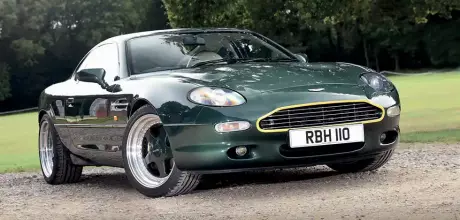1999 Aston Martin DB7 GTS Coupe
Commissioned in the mid-Nineties by Aston Martin’s largest dealer in response to the forthcoming Jaguar XK8, the GTS made the DB7 much more muscular in appearance. We talk to the company responsible for it before driving a rare example.
WORDS & PHOTOGRAPHY PAUL WALTON
The threat posed by the XK8 to the DB7 when it went on sale in 1996 was a sizeable one. Whereas the Aston Martin was now three years old and its Jaguar-sourced chassis and running gear were older still, the V8 sports car was largely all new. Add in that the new car was also considerably cheaper and it’s surprising the DB7 found any buyers at all.
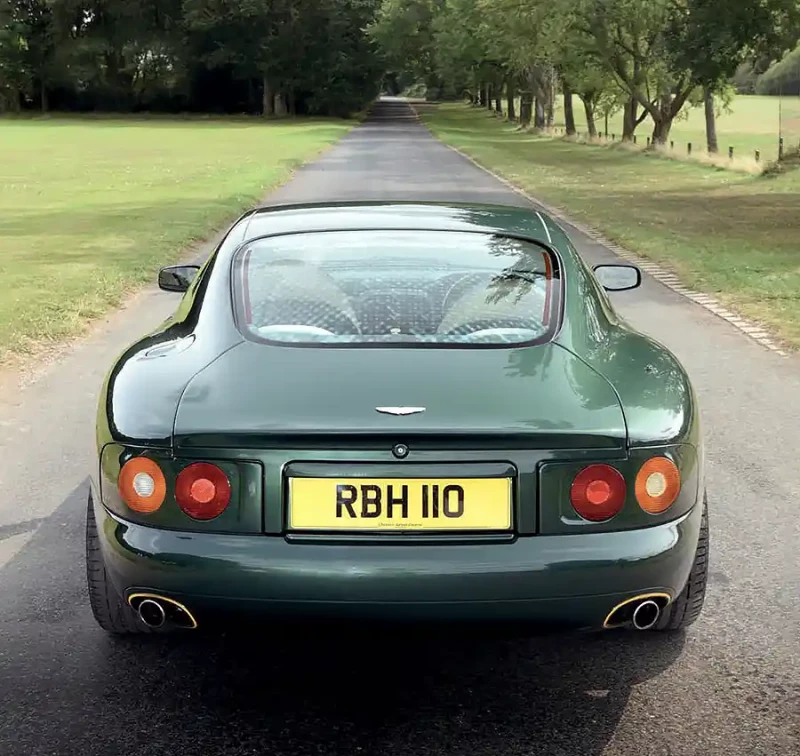
Aston’s dealers understood this but while the majority were helpless to defend the DB7 against this new homegrown enemy, one commissioned a series of simple yet effective aftermarket modifications that would help maintain the car’s desirability.
They were the idea of Derek Campbell from Aston Martin Sales of Mayfair (now Stratstone). With seven dealerships across the country (including the prestigious Berkeley Street in the heart of London), it was Aston Martin’s largest franchised dealer and therefore had plenty of clout. Knowing the new XK8 would rob the now three-year-old DB7 of sales, Campbell asked Sales of Mayfair’s outsourced bodyshop, Car Care Works (today called Chiltern Aston Centre), located a few miles outside Hemel Hempstead, to develop a series of updates for the car that would be later called the GTS.
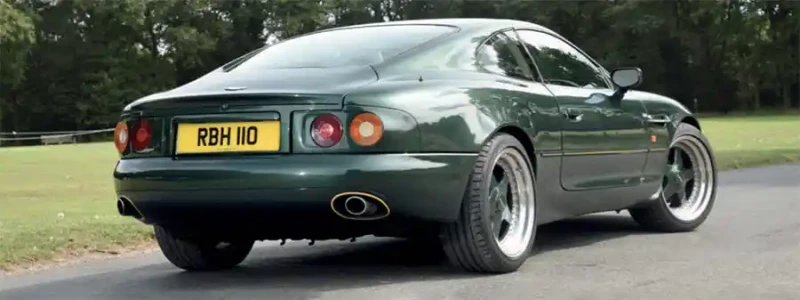
“The brief from Derek was to make the DB7 ‘look more purposeful,’” Chiltern’s Gordon Wyles, who was closely involved with the project, tells me. And so the standard alloy wheels were swapped for Speedline Alessio five-spoke split rims while the window quarters and scuttle panel were now body colour. Inspired by Aston’s racing cars of the Fifties, a yellow band was added around the grille plus a coachline down its side.
“We were asked to do one with two broad ‘Viper’ stripes,” continues Gordon, “but it looked appalling. The car was displayed in one of Mayfair’s showrooms but when a senior director walked past, he said simply, ‘I don’t think so.’” Thankfully it remained a one-off.

The most noticeable change was a pair of Zagato-styled twin bonnet bulges with integral air louvres. Not only did these look good but they also helped solve the DB7’s under-bonnet heating issues that Gordon says were causing spark plug and coil failures.
The bulges were made from carbon fibre, but the Car Care Works team initially had difficulties bonding them to the steel bonnets of the later cars. It was onlyachieved when, by pure coincidence, a retired Boeing engineering director, whose entire working life had been spent bonding dissimilar materials, happened to be visiting the showroom for something unrelated.
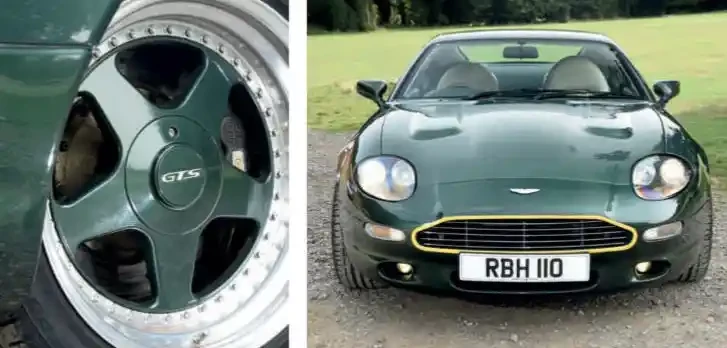
“I was talking to her husband, explaining how we were having an interesting time joining carbon fibre to steel,” Gordon tells me, “when he said, ‘This is just the woman to talk to!’ She explained if we did this, this and this and used certain products it was completely doable.” Gordon says by following her lengthy but accurate instructions, the issue was finally resolved.
The DB7’s plastic eggbox grille was then swapped for an aluminium mesh. The inspiration for this came from a famous source. “We happened to have Old Number 1, the 1929 and 1930 24 Hours of Le Mans-winning Bentley Speed Six, in our showroom at the time,” explains Gordon. “I said why don’t we make a mesh grille similar to Old Number One’s with an aluminium surround and then set it back slightly?” The result was a handsome and sportier look that would influence a generation of cars (and still does).
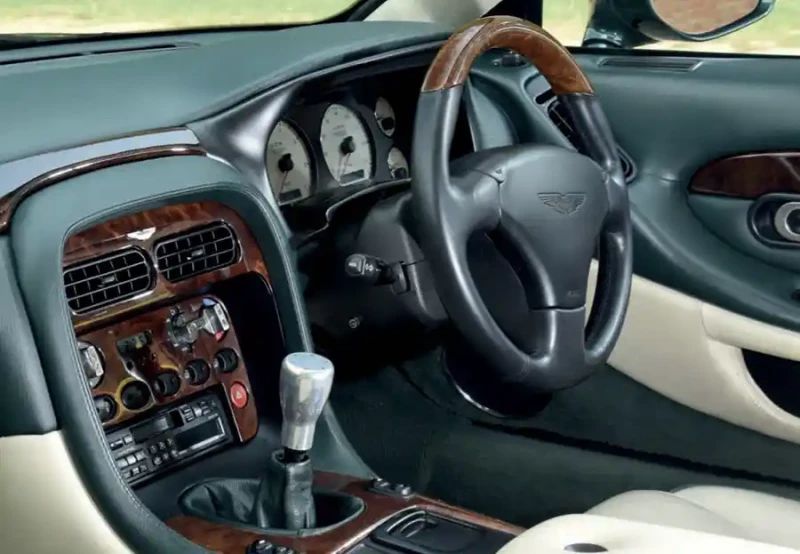
The car’s interior was left largely alone although the dials were now white and the speedo and rev-counter featured the GTS logo. There was also a new wood-rimmed steering wheel plus aluminium gear knob while a Garrard analogue clock was fitted in the centre console.
Other than a sports exhaust, mechanically the car was left standard. Pleased with the result, Sales of Mayfair ordered seven examples, one for each of its dealers, as a showpiece for their showrooms.
Due to the aesthetical and commercial success of these changes, Mayfair began offering them to customers of both new and used cars, coupes and Volantes. In 1998 Car Care Works introduced a series of new updates under the GTS II name that again were available from Sales of Mayfair. These included four circular rear lights from the supercharged Vantage that were cleverly set into a panel the same shape and size as the Mazda-sourced originals. The wheels were now the even racier body-coloured split rim Speedline Mistrals with the GTS logo in the centre. There was also the option of a slatted stainless steel grille similar to that fitted to both the later DB7 Vantage and V8 Vantage.
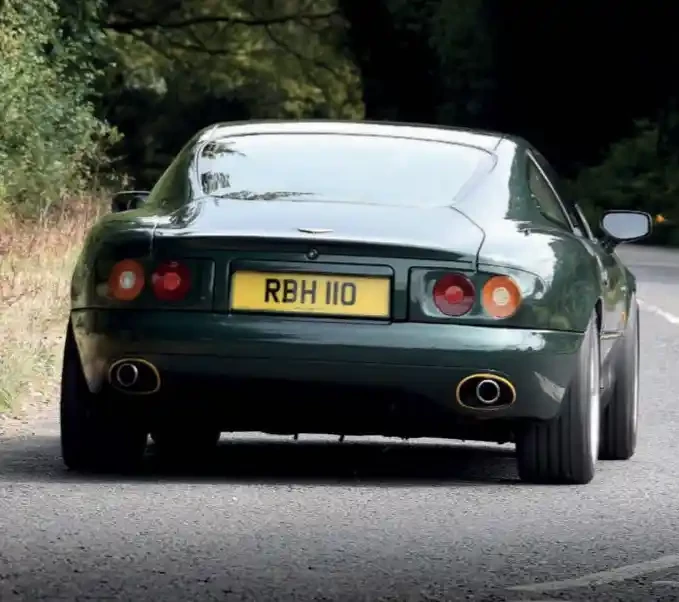
The brakes were updated to six-piston calipers plus 14in cross-drilled discs with a choice of pad material including normal, racing and reduced dust depending on usage.
Finally, the interior had a few more aluminium accents including for the air-conditioning controls and around the door handles. These Mazda-sourced handles – which Gordon tells me always break – were also rebuilt using a higher quality of materials. Chiltern says around 50 DB7s have been converted into GTS and GTS II spec which includes a small number of Vantages.
Judging by the example seen here, Gordon’s own GTS II in Balmoral Green, it’s clear the Car Care Works team met Derek Campbell’s request of making the DB7 more purposeful. The five-spoke wheels and bonnet bulges help make the usually elegant coupe appear much more muscular. Similar to those used by the Ferrari 550 and McLaren F1, I also reckon the circular rear lights are classier than the Mazda 323F originals.

It’s not known if Aston Martin Racing took inspiration from the GTS, but the yellow band around the nose is identical to that of the DBR9 from 2004 plus the V8 Vantage GT2 four years later. Together with the later style of slatted grille, the yellow band helps make the DB7 appear both younger and sportier than it actually is.
Other than the later DB7 Vantage steering wheel fitted to this car, the interior is largely standard although the extra aluminium gives the car’s usually cheap-looking cabin a much-needed lift.
The small handful of DB7s like Gordon’s that were fitted with the Getrag five-speed manual transmission already feel livelier and more responsive than those with the slow and dim-witted automatic. But the sharpness of the GTS II’s uprated brakes together with the fruitier exhaust bark further transform the DB7 from a grand tourer into more of a nimble sports car. The DB7 might have been one of the prettiest cars of the Tenties, but until the V12-engined Vantage arrived in 1999 its dated running gear meant it was soon left behind by the Jaguar XK8 plus other newer rivals.
Yet the simple yet effective updates behind the GTS model helped transform the car both aesthetically and dynamically to give it a new lease of life.
The threat by the XK8 might have been sizeable yet ironically its impending launch resulted in one of the best DB7 models in the car’s ten-year production run.
Thanks to: Chiltern Aston Centre (chilternaston.co.uk)


